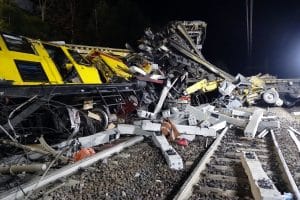What You Should Know about Railroad Accidents
 When railroad accidents happen on any line, the crash or derailment is likely to injure multiple victims. In many cases, the force and size of the railroad cars cause victims to die. It’s not just the passengers in Amtrak trains who may be injured or killed. Drivers and passengers in cars that are struck by the trains can also suffer death or catastrophic injuries. Pedestrians who are struck by a train are likely to be killed.
When railroad accidents happen on any line, the crash or derailment is likely to injure multiple victims. In many cases, the force and size of the railroad cars cause victims to die. It’s not just the passengers in Amtrak trains who may be injured or killed. Drivers and passengers in cars that are struck by the trains can also suffer death or catastrophic injuries. Pedestrians who are struck by a train are likely to be killed.
If a loved one is killed in a railroad accident, the families of the victims have the right to file a wrongful death action. Survivors who don’t work for the railway can file a personal injury action, where they can demand compensation for their pain and suffering, medical expenses, lost wages, property damage, and other allowable damages. Railroad workers who are injured generally file a claim through the Federal Employers Liability Act (FELA).
The railroads will try to make this your fault
Often, in train accident cases involving a vehicle or a pedestrian, the railway will assert that the vehicle occupant or the pedestrian was negligent. A common defense argument is that the car driver failed to stop, look and listen. Another argument is that the car was trying to beat the train at a railway crossing – to cross the tracks before the train comes. Railways often assert that pedestrians crossed against a signal.
In truth, many railway accidents are due to one of the following reasons:
- Negligence by the crew. Engineers who speed, get distracted, take drugs, or fall asleep while running the train can easily cause train to strike a driver or person at a crossing. Trains need to slow down when there is a curve, just like cars most slow to navigate a curve.
- Mechanical failure. A common example of mechanical failure includes crossing arms that fail to operate properly or other failures to warn traffic and pedestrians that a train is coming. Often, outdated technology is a contributing factor. Railway switches may not work. Parts of the train or the network of trains may be defective.
- Derailments can occur due to broken rails, objects on the track, conductor negligence, track failures, and defective train wheels. A serious derailment is often deadly.
- Accidents at railroad crossing. Accidents at crossings are usually due to defective signals, poor visibility, conductors who fail to sound the train whistle, and other causes, including negligence by the vehicle driver.
Other causes of railway accidents include stalled vehicles and, sadly, suicides.
Who is liable in a Minot train accident?
Railroad accident negligence can take many forms and may involve many different defendants. The responsible parties may be:
- The railway itself
- A train conductor
- A railway employee
- A railway maintenance company.
- A governmental agency
- An equipment manufacturer
Trains accidents are generally required to be reviewed by the Federal Railroad Administration. Trains should have black boxes to record necessary information in case of an accident.
In North Dakota, victims are still entitled to damages if their negligence is less than that of the railway. The amount of damages awarded will be reduced by the percentage of negligence of the claimant.
At Larson Law, our railroad accident lawyers work with federal and local investigators to determine the cause of the train crash and who is responsible. We file claims against all responsible parties. We work with your doctors to fully diagnose your injuries, your treatment requirements, and your pain and suffering. If you were hurt or a loved one was tragically killed in a railway collision or derailment anywhere in North Dakota, please call our Minot and Bismarck lawyers at 701-484-HURT or fill out our contact form to schedule an appointment.

Mark Larson is a Certified Civil Trial Specialist and Certified Civil Pre-Trial Specialist focusing on personal injury, car accidents, wrongful death, and oil field claims. Since 1979, Larson Law has served the injured throughout North Dakota. Read more about Mark V. Larson.
